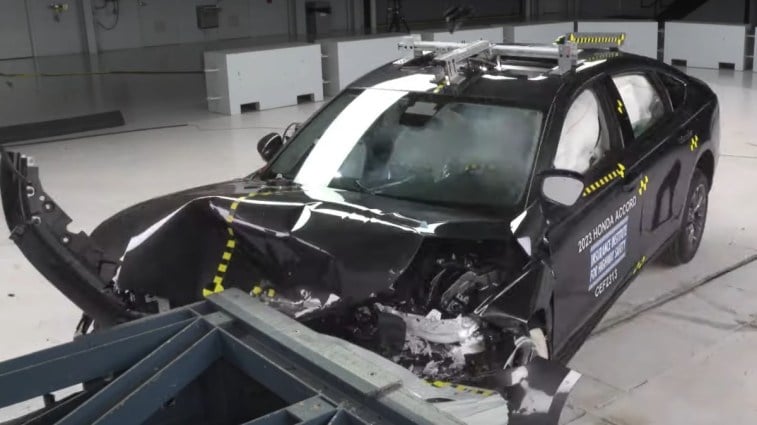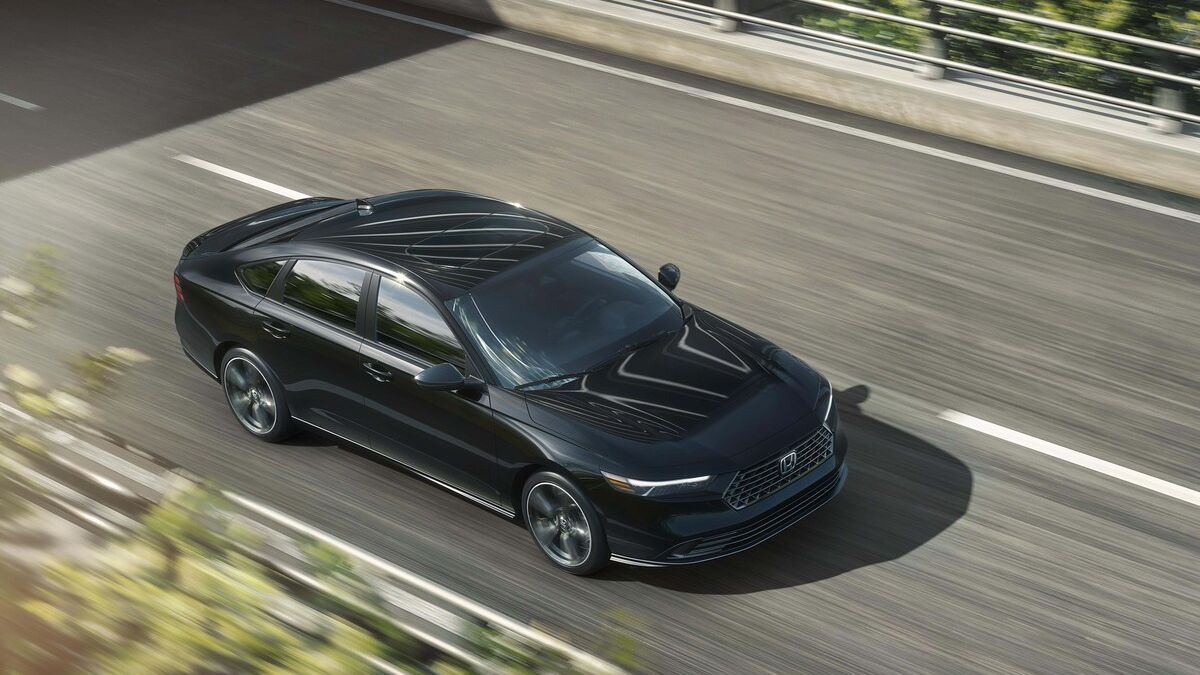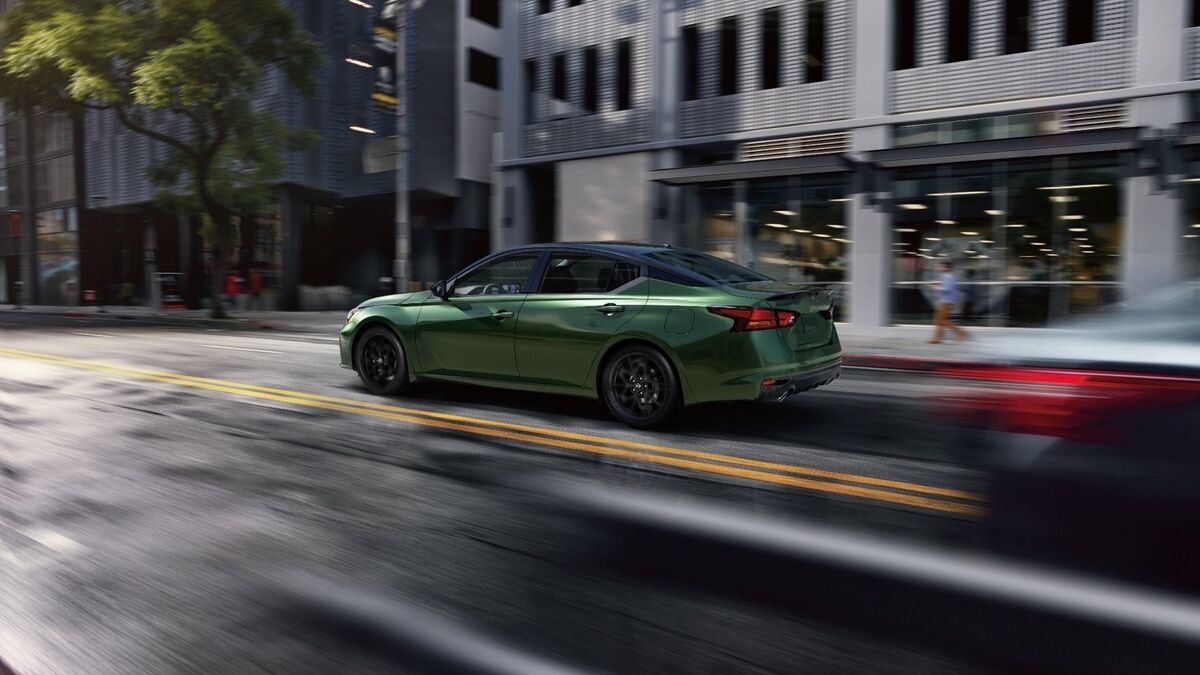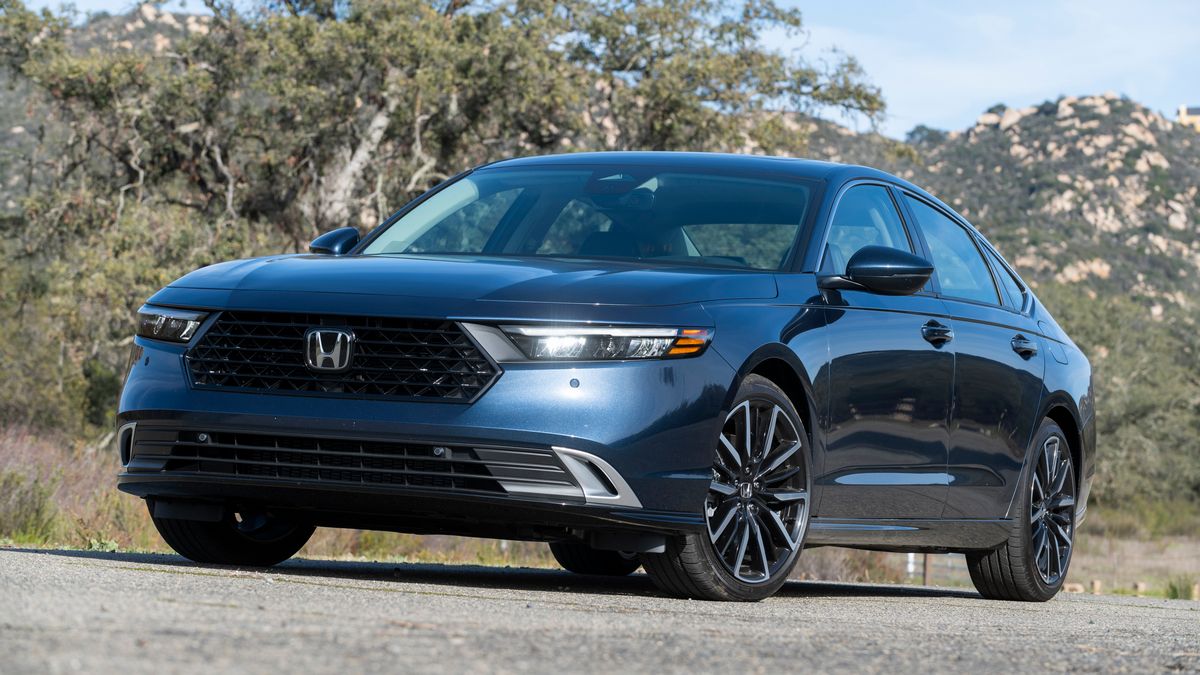
In a new round of tests out this week, the Insurance Institute for Highway Safety (IIHS) says just one of seven midsize cars tested earned the highest possible scores.
Related: Car Safety Ratings and How They Work
America’s Two Crash-Testing Agencies
Two organizations perform crash tests on nearly every car for sale in the United States.
One answers to taxpayers. The federal government’s National Highway Traffic Safety Administration (NHTSA) was not involved in this round of tests.
The other answers to insurance companies. Insurance companies are financially interested in making car crashes as rare and as safe as possible. So, a group of them fund their own safety agency – the IIHS.
Both agencies produce data that car shoppers should consider. But in the automotive industry, the IIHS has a reputation as a tough grader.
When NHTSA wants to change its test, it must subject every proposed change to a public comment period and possible congressional scrutiny. Lobbyists try to soften every change.
When IIHS wants to make a test harder, they make the test harder. Their bosses – your insurance company – want them to be as tough as possible.
So IIHS tests get harder regularly.
What’s New? A Child-Size Dummy in the Back
This year, the IIHS added a child-size dummy to the rear seats of cars for its frontal overlap crash test. The dummy is wired to measure the likelihood of injuries common to rear-seat passengers.
The test sends a vehicle traveling 40 mph into a barrier with a deformable aluminum structure. It doesn’t hit head-on. Instead, the crash occurs with some overlap – like two cars colliding in an intersection when one is out of its lane.
The IIHS says it “launched the updated moderate overlap front test last year after research showed that in newer vehicles, the risk of a fatal injury is now higher for belted occupants in the rear than for those in front.” That’s probably true because recent safety innovations have made the front seat a much safer place to be in an accident.
By calling attention to the fate of rear-seat passengers, the IIHS hopes to encourage similar innovations for them.
The Results
The agency rates vehicles as Good, Acceptable, Marginal, or Poor based on the likelihood of injuries to the driver and, now, second-row passenger.
Of seven midsize sedans tested, just one earned an overall score of Good: The Honda Accord.
| Vehicle | Overall Rating | Driver Restraints & Kinematics Score | Rear Passenger Restraints & Kinematics Score |
| 2023 Honda Accord | Good | Good | Good |
| 2023 Subaru Outback | Acceptable | Good | Poor |
| 2023 Nissan Altima | Marginal | Good | Poor |
| 2023 Toyota Camry | Marginal | Good | Poor |
| 2023 Hyundai Sonata | Poor | Good | Poor |
| 2023 Kia K5 | Poor | Good | Poor |
| 2023 Volkswagen Jetta | Poor | Good | Acceptable |
The IIHS classifies the Jetta as a midsize car, while Kelley Blue Book considers it compact.
Why They Struggled
The tests reveal an engineering problem the auto industry needs to solve.
“In most of the midsize cars we tested, the rear dummy slid forward, or ‘submarined,’ beneath the lap belt, causing it to ride up from the pelvis onto the abdomen and increasing the risk of internal injuries,” IIHS President David Harkey said.
That wasn’t the only issue. “In the three poor-rated vehicles, measurements taken from the rear dummy also indicated likely injuries to the head or neck as well as to the chest,” Harkey notes.
But it was a consistent problem across nearly every car tested, and one Honda alone appears to have solved. That means an answer is within reach.
Drivers need this answer. The poor results mimic those the institute found in both midsize SUVs and small cars earlier this year.







